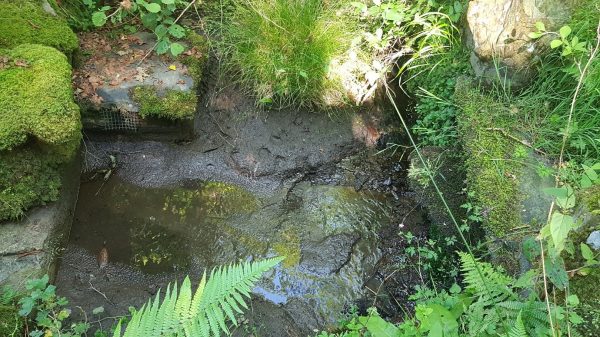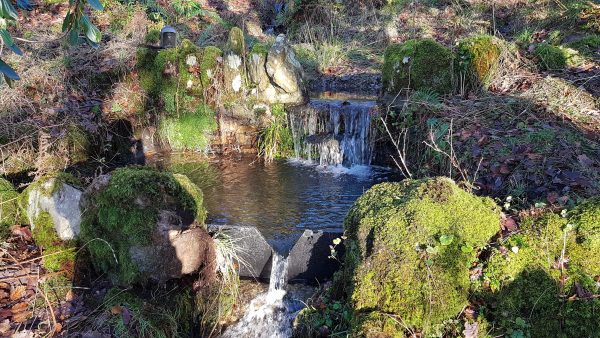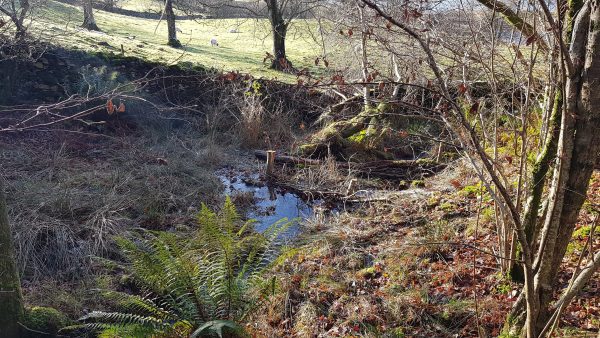Esthwaite Water is situated in South Cumbria, near Windermere. Not only is Esthwaite Water one of the best studied lakes in the world, it is also one of the most nutrient enriched lakes in the English Lake District.
A project site was recently identified on the shore of Esthwaite water SSSI. This is a project area in which we are working to reduce sediment and nutrient input into the lake, aiming to improve water quality in the SSSI. At the site, in an area of woodland, a considerable amount of sediment was accruing in a small beck that runs into Esthwaite downstream. Agricultural land upstream was the source of the sediment. This area used to be a working drinking water supply, however it had fallen into disrepair. The system did originally incorporate silt collection pools to filter out the sediment, however these no longer work in high flows. To stop this sediment entering the SSSI we have created sediment storage areas and alternative flow pathways by creating leaky dam structures in the woodland, and by making changes to an existing water supply pond. We have worked to clear out two ponds full of silt and sediment and fabricated a screen on the exit of one of these existing ponds. This has increased the height of the spillway and increased storage capacity, allowing silt to settle. The work provides:
- Ecological benefits from creating an area of wetland/wet woodland
- Slowing the flow and allowing the settlement of sediment and nutrients that would otherwise enter the Esthwaite SSSI in high flows
- Benefits to agricultural practices by reducing the likelihood of widespread overland flow downstream in high flows

Figure 1: Silt ponds before project delivery work showing an accumulation of silt that in high flows was washing out and into Esthwaite Water SSSI.

Figure 2: Newly excavated silt ponds and fabricated silt collection screen.

Figure 3: Newly installed leaky dam slowing the flow of water, allowing silt to settle and creating alternative flow pathways.
This project was supported and funded by United Utilities catchment wise.
